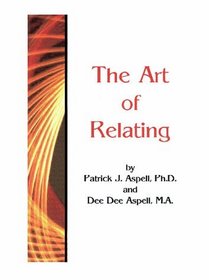Search -
The Art of Relating : 45 Interpersonal Relationships
The Art of Relating 45 Interpersonal Relationships
Author:
The co-authors are a unique team that blends theory and practice. Their personality and relationship can be described in the words of the Enneagram and will give you an idea of how interpersonal relationships are presented in Part III of this book. Patrick is an Observer (or, in Enneagram numbering, a #5) who gathers data, reflects on ide... more »
Author:
The co-authors are a unique team that blends theory and practice. Their personality and relationship can be described in the words of the Enneagram and will give you an idea of how interpersonal relationships are presented in Part III of this book. Patrick is an Observer (or, in Enneagram numbering, a #5) who gathers data, reflects on ide... more »
ISBN-13: 9781881773030
ISBN-10: 1881773035
Publication Date: 7/12/2000
Pages: 229
Rating: ?
ISBN-10: 1881773035
Publication Date: 7/12/2000
Pages: 229
Rating: ?
0 stars, based on 0 rating




